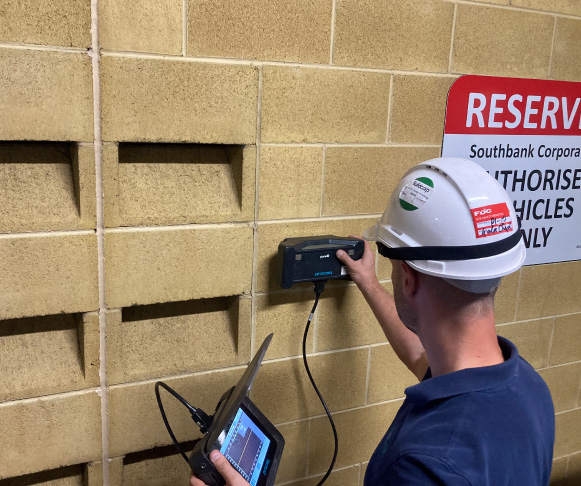A Proceq PL-200 Case Study by South-East Scanning
In the dynamic world of construction and infrastructure, the quest for concrete quality, homogeneity, and structural integrity is paramount. Enter ultrasonic-pulse velocity (UPV) testing, a non-destructive method that has revolutionised the way we assess concrete’s internal structure. South-East Scanning, a renowned player in the industry, proudly introduces UPV testing as part of its expanded suite of services. In this comprehensive article, we delve into the UPV testing process, its benefits, and showcase a recent case study with Austrak, a leading manufacturer of concrete sleepers for railways.
Understanding Ultrasonic-Pulse Velocity (UPV) Testing
UPV testing employs high-frequency ultrasonic pulses to assess the integrity and homogeneity of concrete. These pulses travel through the material, and their velocity is measured. The principle is simple: sound travels faster through denser and more solid sections of concrete, and slower through areas with voids, cracks, or inclusions. By calculating the pulse velocity, we gain insights into the quality of the concrete and any potential flaws within.
Benefits of UPV Testing
• Non-Destructive: UPV testing is non-destructive, preserving the integrity of the structure while providing valuable insights.
• Early Detection: The method can detect hidden defects and anomalies before they escalate into larger issues.
• Efficiency: UPV testing is swift, allowing for quick assessment of concrete quality, expediting construction projects.
• Precision: The data obtained is accurate, enabling informed decision-making for remediation or acceptance of concrete elements.
UPV Testing Process
• Surface Preparation: The concrete surface is cleaned and prepared for testing.
• Transducers Placement: Ultrasonic transducers are placed on the surface, emitting pulses that travel through the concrete.
• Pulse Velocity Measurement: The time taken for pulses to travel between transducers is recorded.
• Interpretation: Pulse velocity data is interpreted, providing insights into concrete quality and potential flaws.

Case Study: Enhancing Railway Concrete with Austrak
South-East Scanning recently collaborated with Austrak, a prominent manufacturer of concrete sleepers for railways, to conduct UPV testing on their concrete sleepers. Our team utilised the Proceq PL-200 unit, renowned for its precision and reliability. Through rigorous testing, we assessed the homogeneity and structural integrity of Austrak’s concrete sleepers. This data empowered Austrak to ensure the highest quality standards, contributing to safer and more durable railway infrastructure.
Conclusion
Ultrasonic-pulse velocity testing has emerged as a cornerstone of advanced non-destructive testing methods, ensuring the quality and longevity of concrete structures. South-East Scanning, with its expertise and the Proceq PL-200 unit, takes UPV testing to new heights. Through our recent collaboration with Austrak, we demonstrate the real-world impact of UPV testing on enhancing concrete quality. Join us in embracing innovation and precision for a more robust and reliable construction landscape.
Contact South-East Scanning today to explore how our UPV testing services can elevate the quality and integrity of your concrete projects.